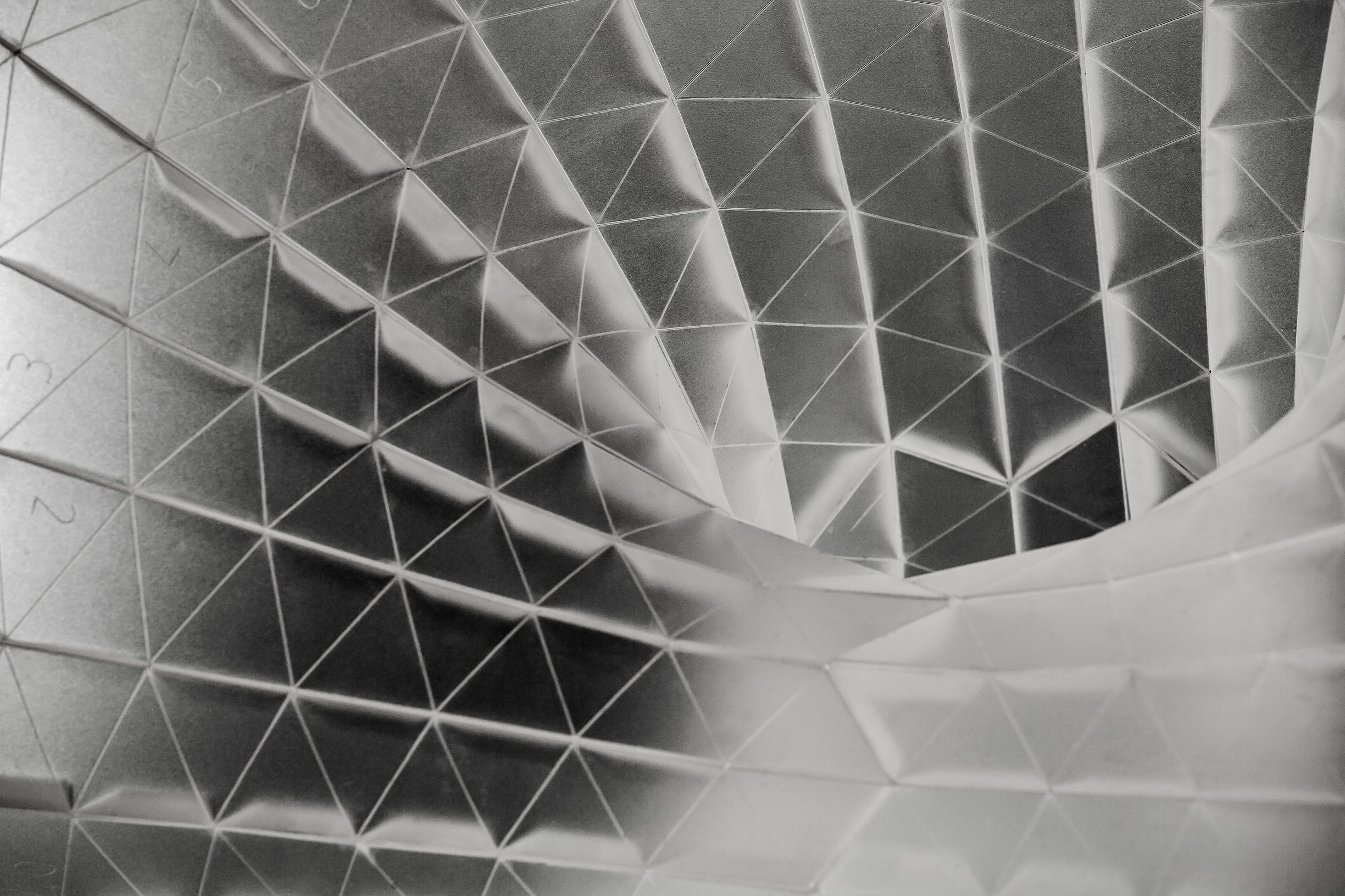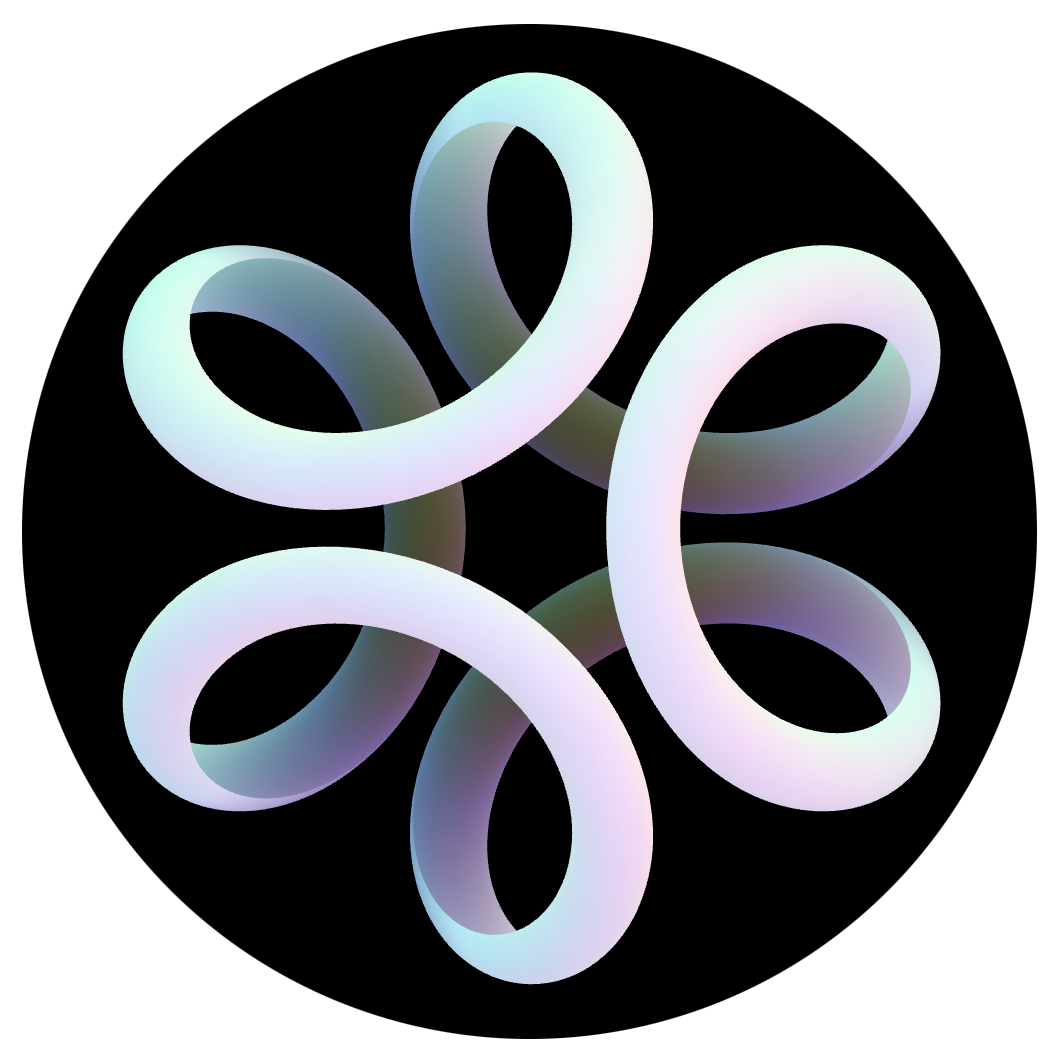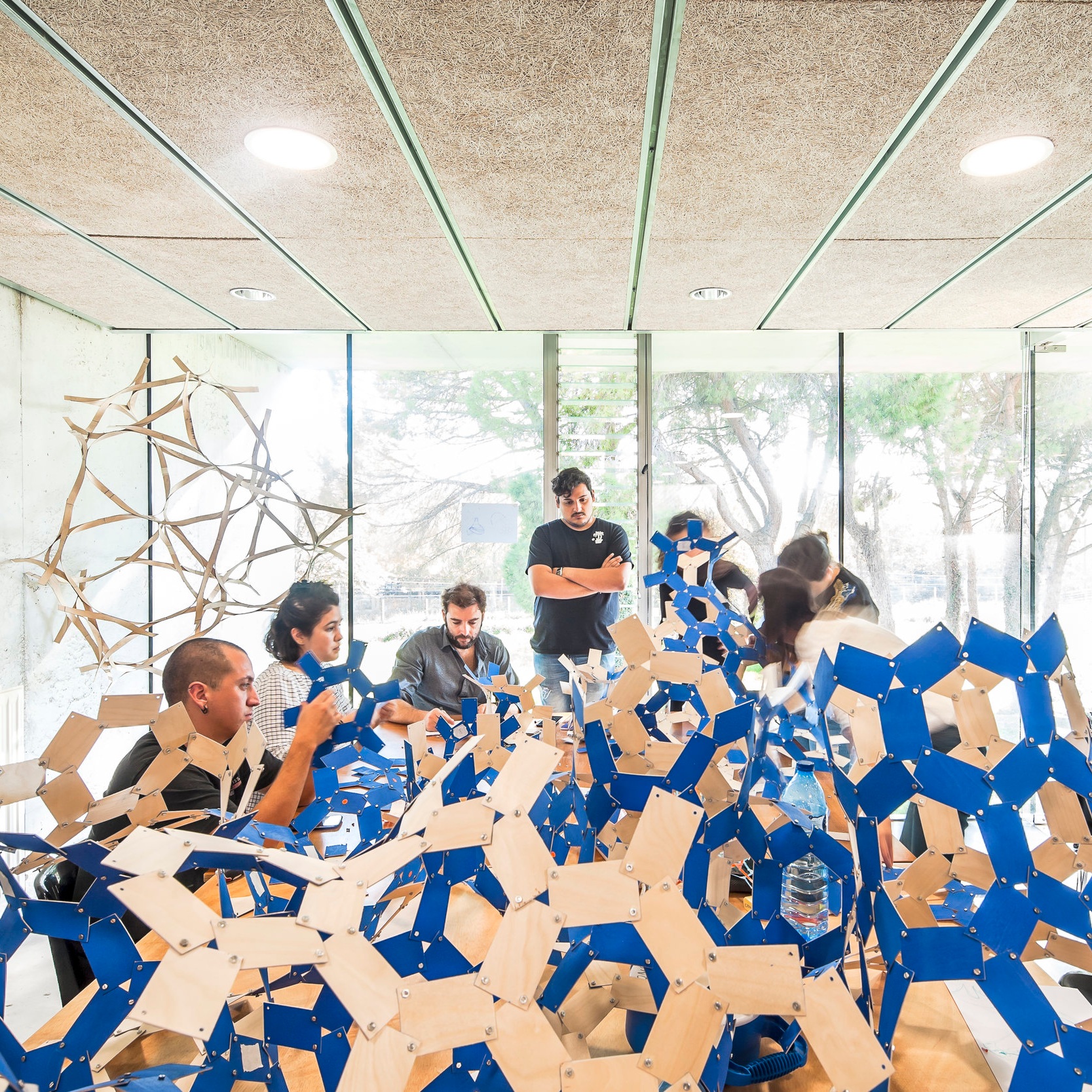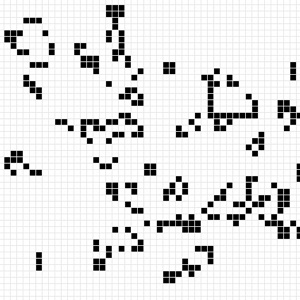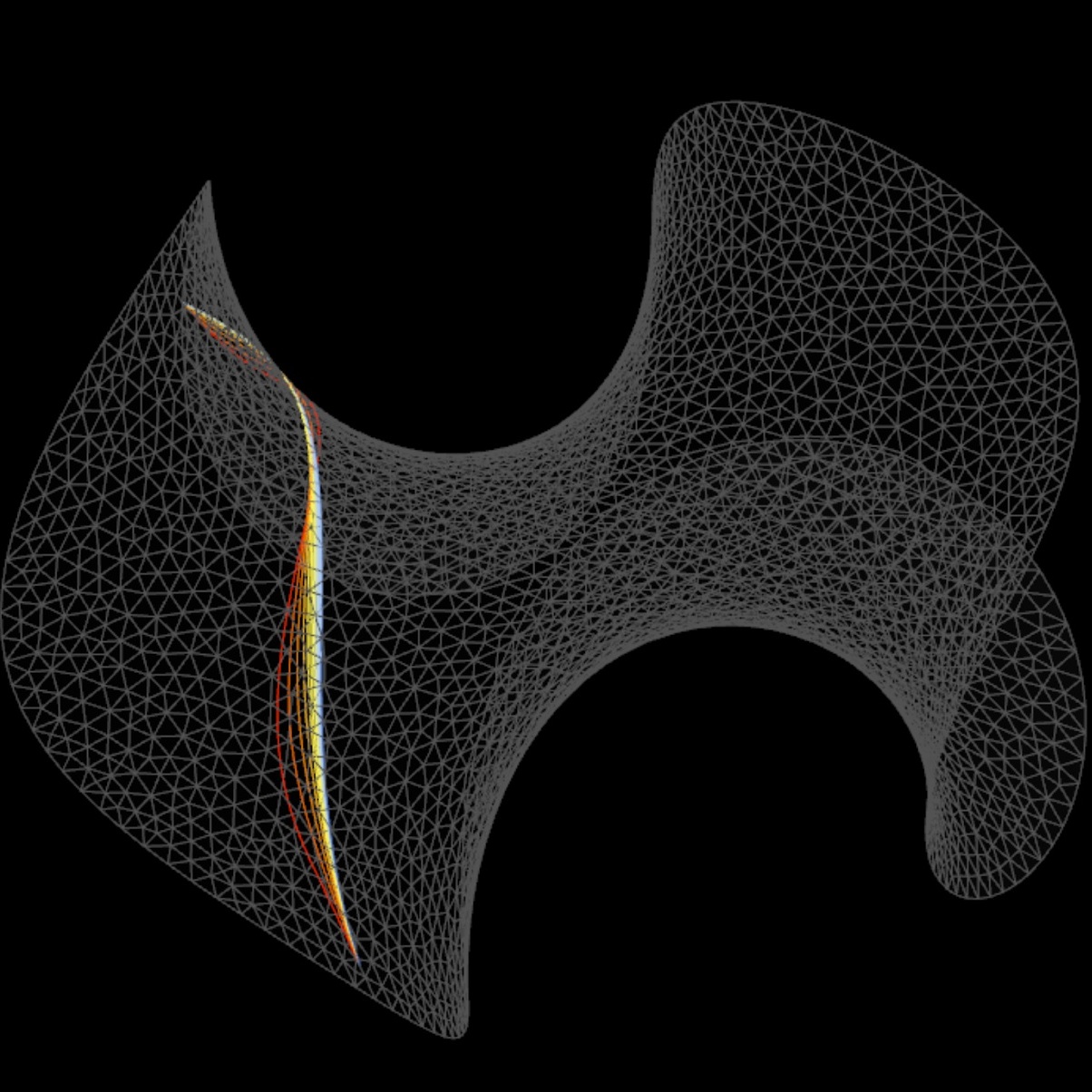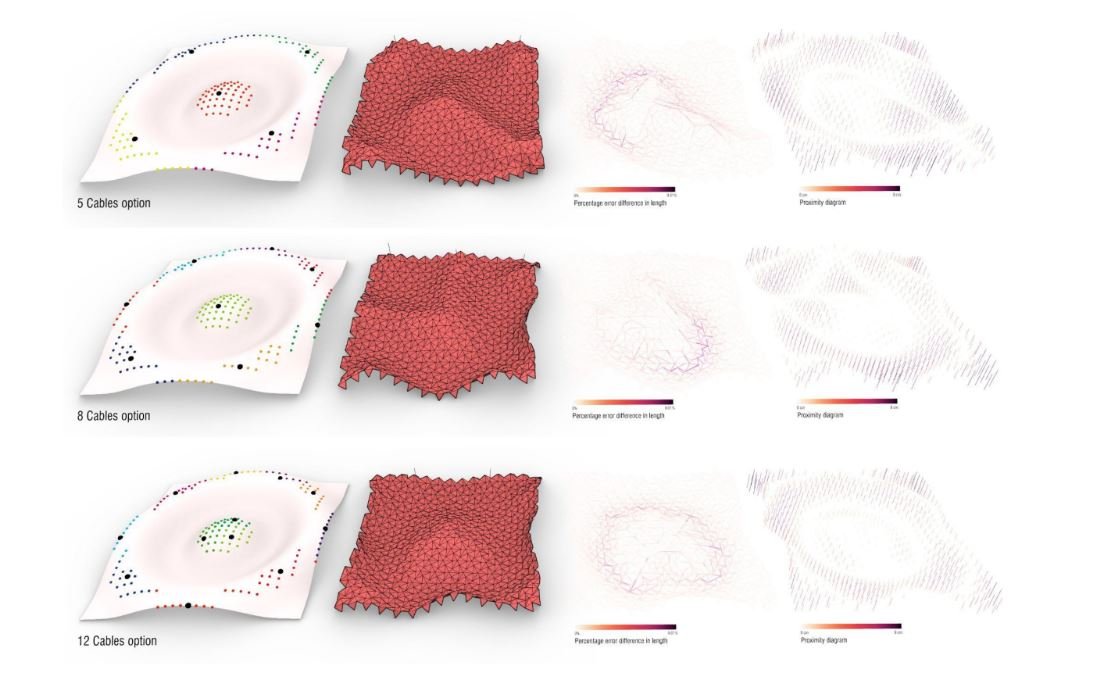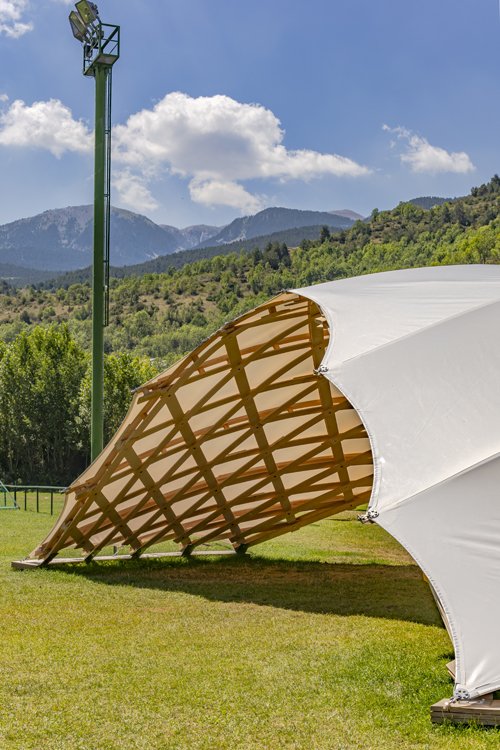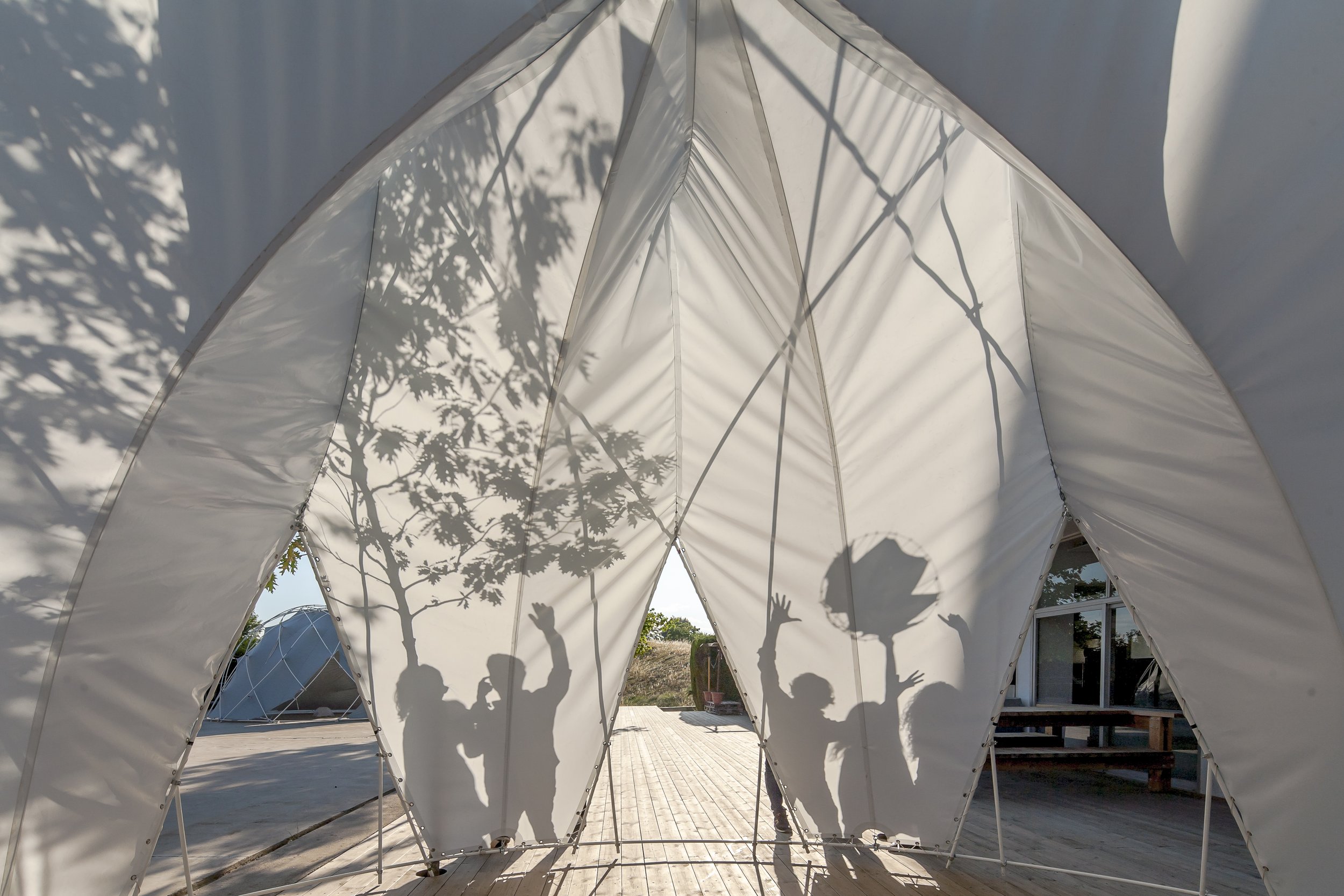Lightweight efficient form by efficient means
The UPC School MPDA Master’s degree Parametric Design in Architecture is an international program that seeks to teach and explore technology efficiency.
The architectural project is a complex process, in which knowledge management must be linked to design in an operational way. In this regard, parameters are all the categories of information that affect decision-making. The aim of parametric architecture is to go beyond shapes, in order to design a system integrating all the variables involved in the process, minimizing energy and cost to produce ultimately an efficient form. Hence the potential offered by modern software tools and programming frameworks, is to change the design process and turn architects into builders of systems.
This master's degree offers a comprehensive approach training professionals in advanced architectural creation, oriented to efficiency in buildings and commitment to the environment. The course opens with practical digital and physical workshops on parametric software, geometry and numerical control machines, aimed at solving real problems in complex architectural design. The second semester, explores real applications through performance driven design aiming to create interaction and synergies between parametric design and other disciplines such as BIM, urban design, planning, construction, structures, installations, services and climate in order to obtain more efficient and sustainable results.
KNOWLEDGE FIELDS
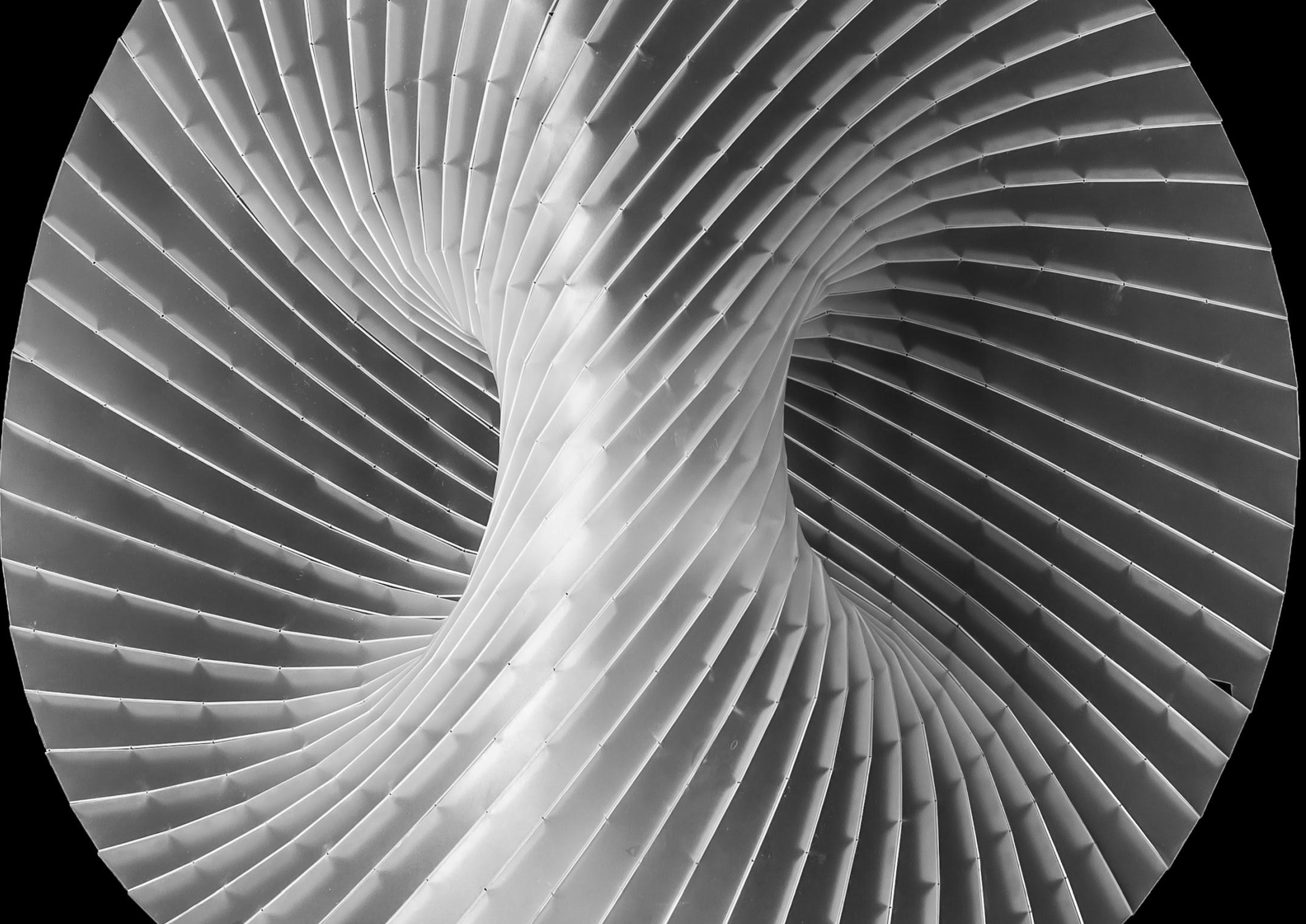
Lightweight structures
Design and optimization of lightweight building systems, mainly through form-finding processes, including tensile architecture, cable-nets, pneumatics, shells and gridhsells
Programming
Guiding computational thinking and tools to the simplification of processes. Problem solving, algorithimic thinking and data structures.
Structural analysis
Lineal and non-lineal analysis for performance-driven design. Feedback loop geometry engineering.
Architectural geometry
Geometry of remarkable curves and surfaces for the pre and post rationalization and discretization
Optimization
Single and multi objective optimization. Critical use of data and creation of statistical measures
Energy simulation
Radiation, daylight, energy simulation and integration in optimization workflow.
Territory and landscape
Data parsing, GIS, pattern recongition, big data, complexity handling, natural agents
Construction-aware design
Design is generated in a way contemplating from the origin the efficent construction, therefore has to embbed all geoemtrical constraints
Digital fabrication
Machining, efficient fabrication, integration of process, matter and machine. Understanding of machine operations and custom toolpaths.
Form-finding
Our aim is to design and discover novel form-finding strategies through the methodological integration of forces, matter and processes
BIM integration
Integration with professional workflows and industrial standards, although keeping a wide space for experimentation, research and industry oriented innovation.
Ecological footprint
Generation of efficient form by efficient means, namely lightweightness, material efficiency, rationalization of complex surfaces, cutouts reduction, path minimizations, reusability, deployability, for the ecological footprint reduction
GOALS

Integration of computational tools and digital manufacturing technology in building systems and architectural sustainable design
Students completing this master's degree are working in advanced design offices or consulting firms, bringing new skills and knowledge that will allow them to tame complex architectural creation under the new paradigm of parametric design and the restrictions of climate emergence
Increase the design topological space while building resilient flexible design models.
Design and analysis of building systems, including lightweight systems.
Build expertise on rationalizing complicated geometry into complex structured data ready to fabricate.
Avoid unexpected overcharges linked to design changes.
Work in teams on interoperability platforms.
Apply optimization algorithms in any design field and at different design stages.
Identify patterns on large datasets.
HIGHLIGHTS
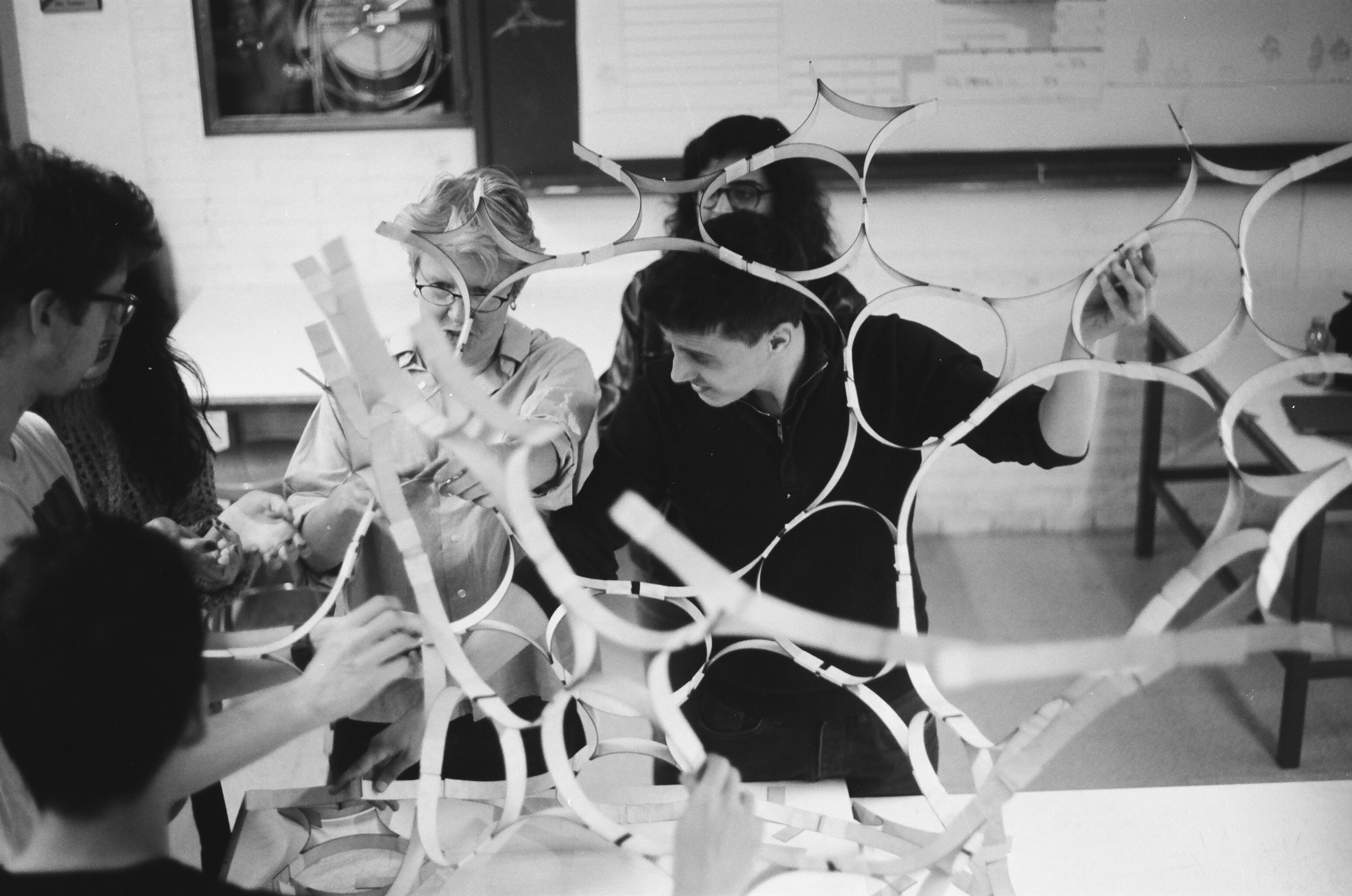
Ecological sustainability agenda. Focus on lightweight and efficient systems
Rich lecture series from international field expert guests
Very intensive one year life changing experience
Integrated approach for architects and engineers
International program with more than 30 nationalities students from all continents
Research and innovation oriented through real case study professional projects
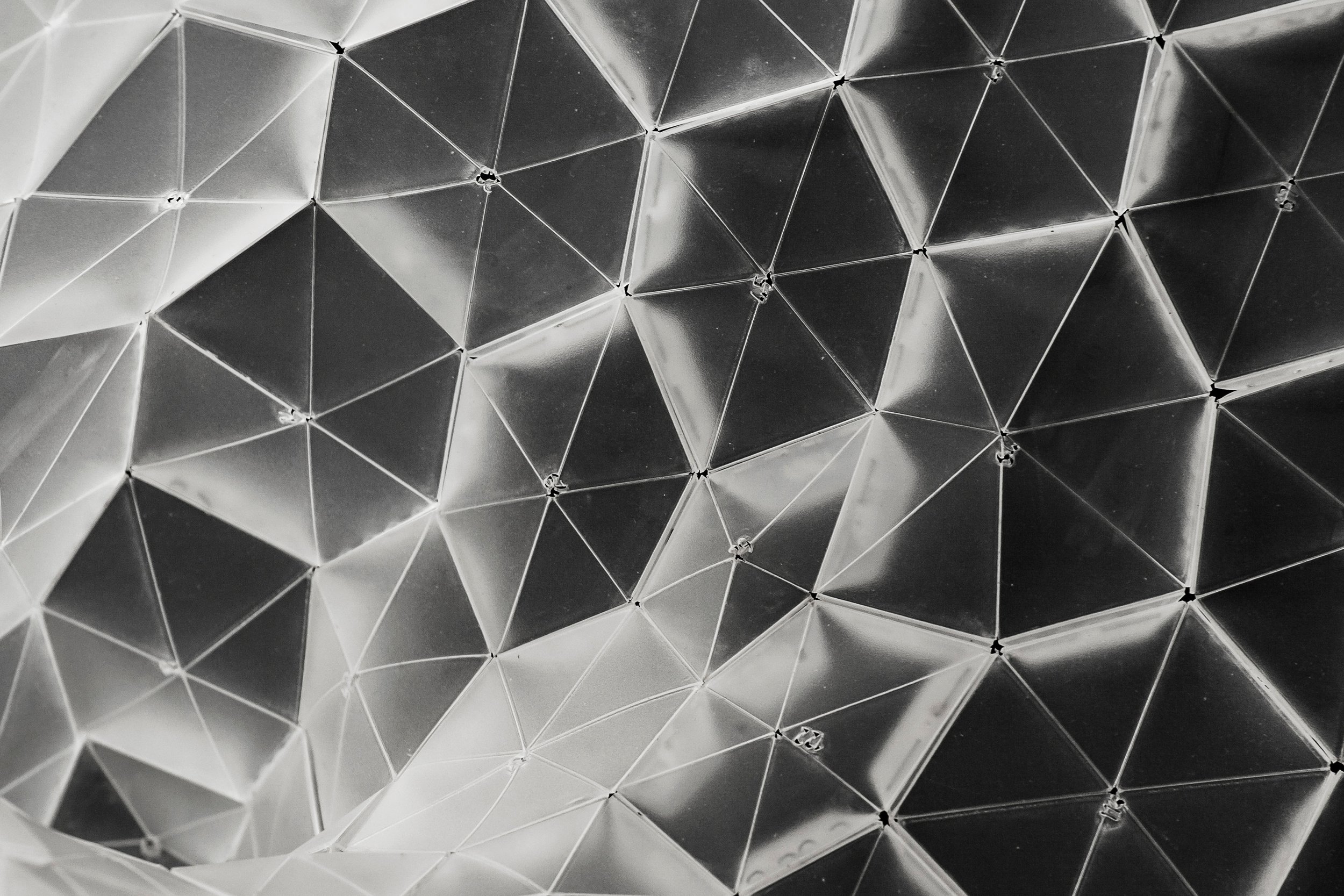
FIRST SEMESTER
S1 STUDIO 1
Parametric modelling of construction systems and form-finding of efficient form
DF DIGITAL FABRICATION
Rationalization, discretization and efficient fabrication
PG PARAMETRIC GEOMETRY
Geometric foundations and applied architectural geometry
FA FROM SIGN TO ALGORITHM
Introduction to logic systems, algorithmic thinking and programming
SECOND SEMESTER
s2 STUDIO 2
Construction-aware design
at ALGORITHMS IN TECHNOLOGY
Development of algorithmic thinking and programming
bi BUILDING INFORMATION
Structural and energy Performance-driven design and integration
pl PLANNING AND LANDSCAPE
Data analysis and design restrictions integration
COMPLEMENTARY
W1 WORKSHOPs sm1
Geoemtry Bootcamp, Topology, Optimization
W2 WORKSHOPs sm2
Analysis and Fabrication tools and workflows
.
MT master thesis
Research and Innovation
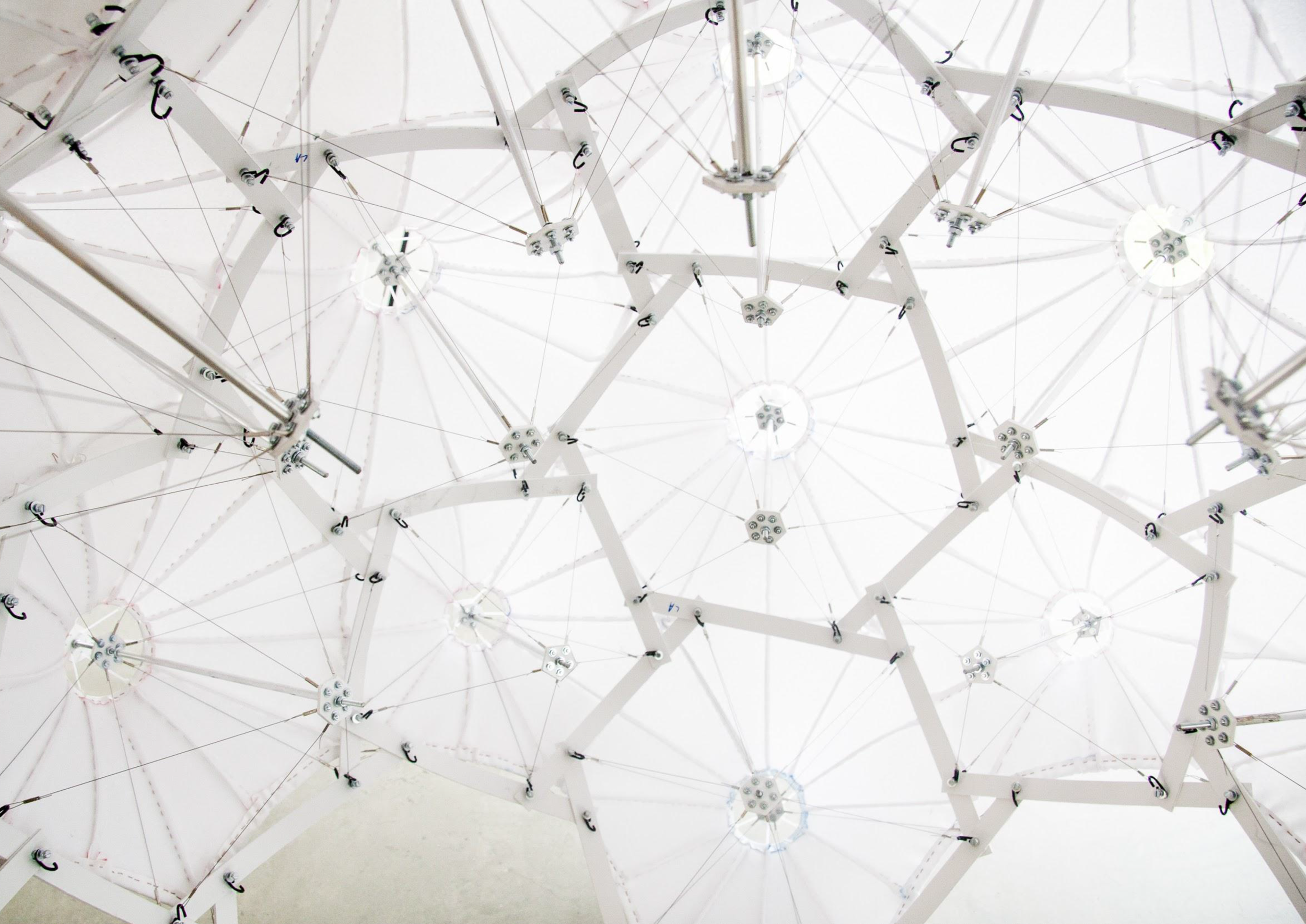
Research and innovation
Master thesis is dedicated to generating original work, based on research, were the student will show how parametric design has changed his/her skills to produce architectural projects. This research work will be done under assistance of a tutor, one of the professors of the master, a will be evaluated by a jury of several members, from the faculty of the master.
Data driven design/ Industry oriented research
Resarch has to be guided by acurate simulations and predictions calibrated by experimentation.
Long-term research / Fun
Your research may lead to a phd research or a patent. Choose a topic where you feel confident and have fun when working on, and you know you can invest much time and effort.
Concise / Novelty
The framework has to be a fraction of a specific started research . The topic has to answer to a clear question you can pose. You have to prove it’s new, and worth working on it, there has to be a clear contribution
GD BRACING SYSTEM FOR NEXORADES (2020)
Nicolás DI VANNI, Rubén FERNÁNDEZ
ag SINUOUS TUBES AND THEIR RESONANT FREQUENCIES (2019)
Toko. OKUDA
GD TOPOLOGY BASED CONSTRUCTION PROCESS OPTIMIZATION (2022)
Ellie GALATA, Srushti MAHAJAN, Jinfeng WU
GD STRESS LINE DRIVEN TIMBER GRIDSHELL OPTIMIZATION (2022)
Deniz E ARSLAN, Leonardo GEREMIA, Khaled SADEDEN, Po-An HSIEH
GD ASYMPTOTIC GRIDSHELLS: APPLICATIONS AND ANALYSIS (2019)
Moaz ABAZA, Pablo FIERRO, Abdel Ghani SAFI, Johan NAVARRO
GD Structural Performance Comparison and Optimization Strategy for Bending-Active Kagome Gridshells (2019)
Andres Saavedra, Ayman Ibrahim, Ivan Ferrero, Joshua Ogren
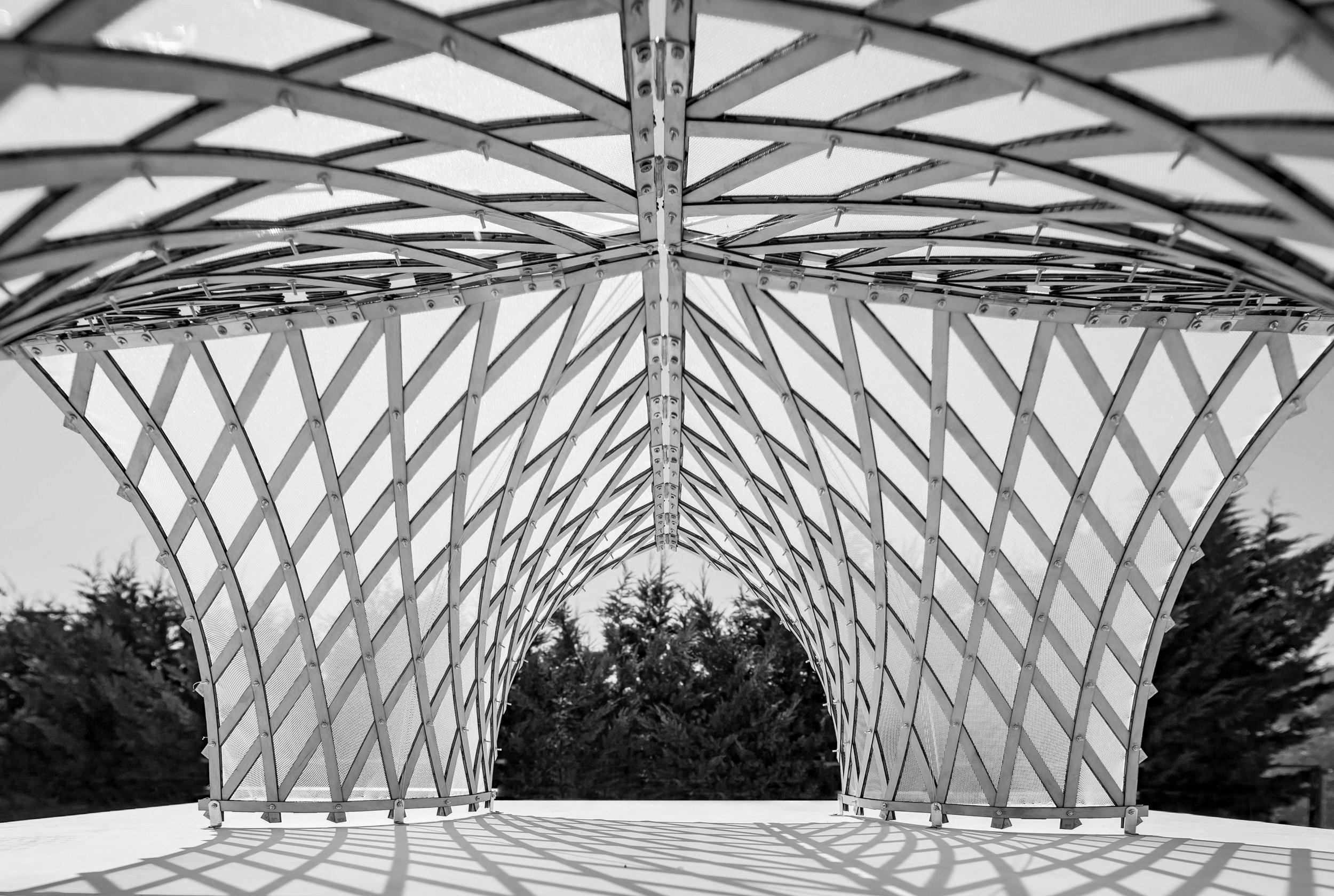
TESTIMONIALS
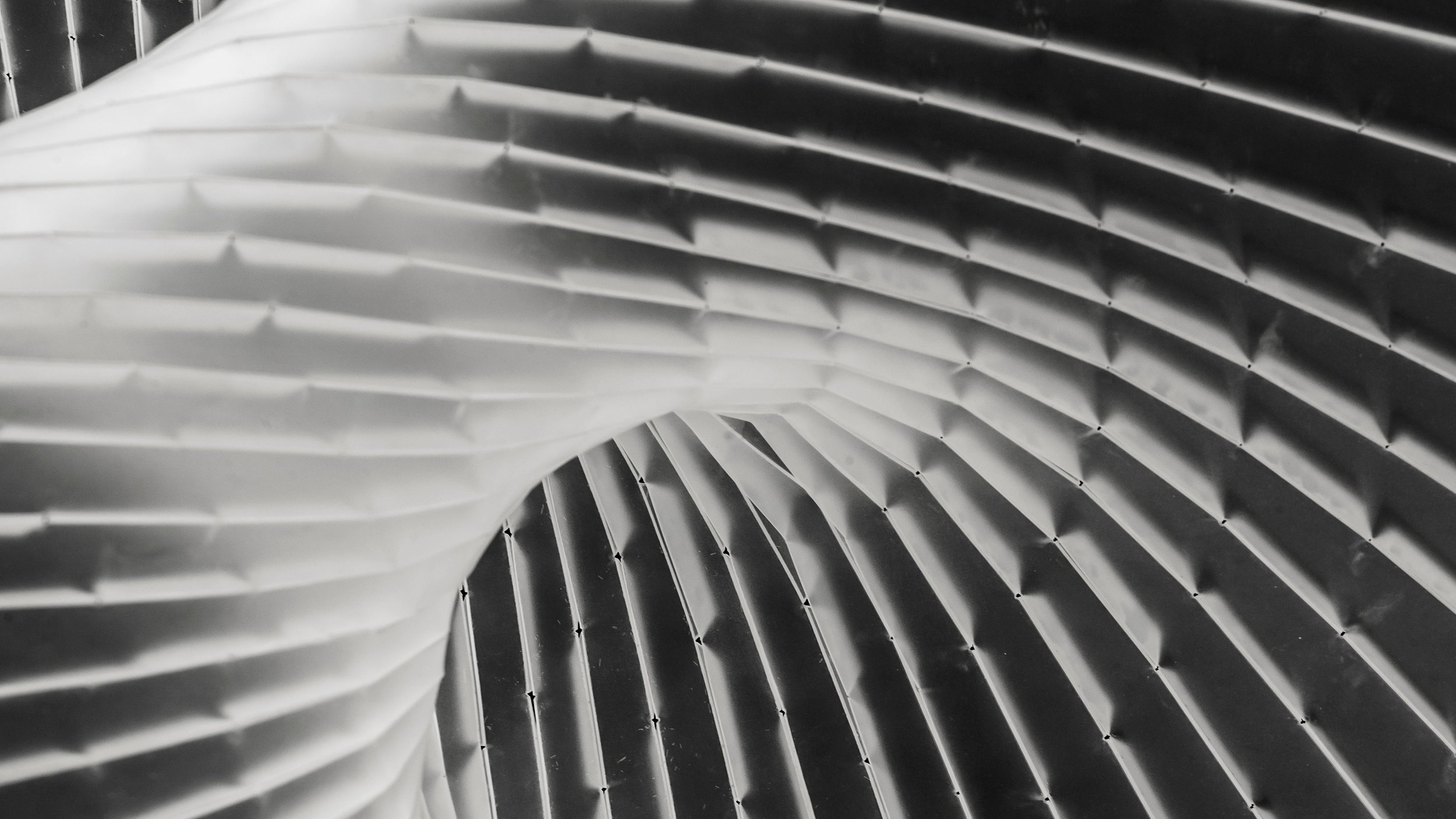
“MPDA was a good decision. First, thanks to the teachers and their extensive curriculum in the fields of research, teaching and innovation. And also because of the wide range of topics covered, which go beyond those offered by other renowned schools, as well as the diversity and multidisciplinary nature of the student group, which enriched our exchange of points of view and our learning.
The master also gave me a kit of very powerful digital and intellectual tools, and provided me with the confidence to face challenges in the workplace.
Since then I have worked on innovation in the architecture field, and I am currently specializing in the design of large-scale projects where I face every day with the new challenges of the construction industry.”
“The perfect complement in my professional development”
Ángel Antequera. Bolivia
Engineer at Modularem
“MPDA has been for me the perfect complement in my professional development. After more than 10 years working as a civil engineer I decided to study architecture. This is when I realized parametric design was becoming increasingly relevant due to recent technological advances and the demands of an increasingly competitive market.
With an holistic approach, the master taught by the UPC encompasses everything related to parametric design and modeling, optimization of solutions, structural analysis, prototyping, fabrication and assembly of structures. The master is supported by an excellent teaching team, always willing to resolve the doubts.
Shortly after finishing the master I decided to create a new studio in my own country supported by the knowledge and design techniques I learned during the course. 100% recommended.”
“I was looking for something in line with my interests but also able to push my skills beyond the limits of traditional design. The master in parametric design exceeded my expectations. An international group led by a young and passionate team proposes a new approach to analysis, design control and much more providing a set of tools with unlimited potential that can be applied 360° both in the field of Architecture and in Product Design.
Briefly after finishing the master I was hired at a computational design team dedicated to the engineering of complex geometries in big projects.”
COLLABORATORS
